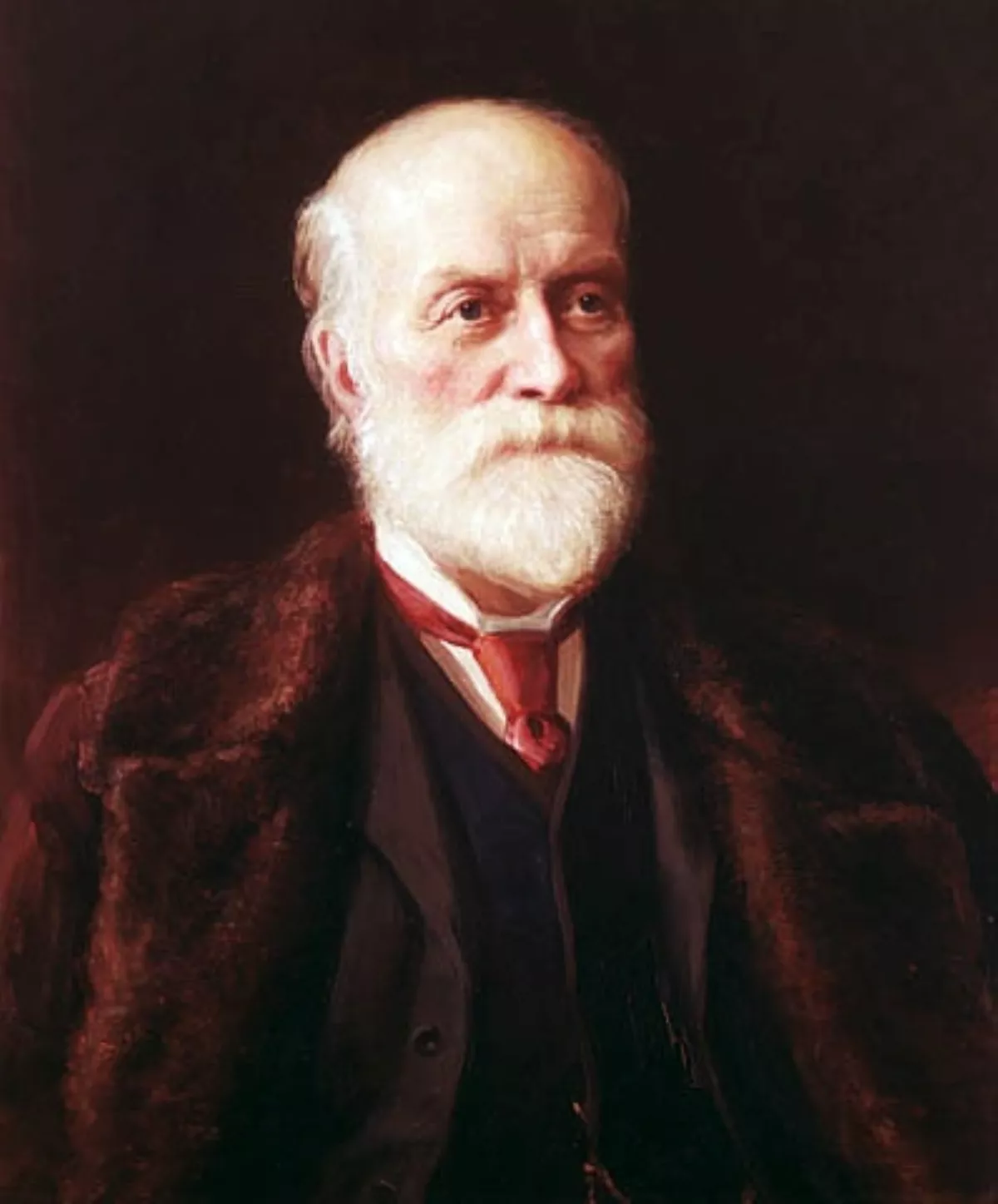 1.
1. Sandford Fleming promoted worldwide standard time zones, a prime meridian, and use of the 24-hour clock as key elements to communicating the accurate time, all of which influenced the creation of Coordinated Universal Time.

 1.
1. Sandford Fleming promoted worldwide standard time zones, a prime meridian, and use of the 24-hour clock as key elements to communicating the accurate time, all of which influenced the creation of Coordinated Universal Time.
Sandford Fleming designed Canada's first postage stamp, produced a great deal of work in the fields of land surveying and map making, engineered much of the Intercolonial Railway and the first several hundred kilometers of the Canadian Pacific Railway, and was a founding member of the Royal Society of Canada and founder of the Canadian Institute.
In 1827, Fleming was born in Kirkcaldy, Fife, Scotland to Andrew and Elizabeth Fleming.
Sandford Fleming served in the 10th Battalion Volunteer Rifles of Canada and was appointed to the rank of captain on January 1,1862.
In June 1880, Sandford Fleming was dismissed by Sir Charles Tupper, with a $30,000 payoff.
Sandford Fleming is credited with "the initial effort that led to the adoption of the present time meridians".
Sandford Fleming later called this time "Cosmopolitan time" and later still "Cosmic Time".
Sandford Fleming proposed 24 time zones, each an hour wide or 15 degrees of longitude.
In two papers "Time reckoning" and "Longitude and Time Reckoning" presented at a meeting of the Canadian Institute in Toronto on February 8,1879, Sandford Fleming revised his system to link with the anti-meridian of Greenwich.
Sandford Fleming suggested that a prime meridian be chosen and analyzed shipping numbers to suggest Greenwich as the meridian.
Sandford Fleming went on to advocate his system at several major international conferences including the Geographical Congress at Venice in 1881, a meeting of the Geodetic Association at Rome in 1883, and the International Meridian Conference of 1884.
Sandford Fleming authored the pamphlet "Time-Reckoning for the 20th Century", published by the Smithsonian Institution in its annual report for 1886.
Sandford Fleming met Moses B Cotsworth in 1908 when Cotsworth visited Ottawa.
Sandford Fleming maintained a close friendship with Cotsworth and they often corresponded by letter.
Sandford Fleming became the president of the International Fixed Almanak Reform League which, in 1922, became the International Fixed Calendar League.
Sandford Fleming held this position for his last 35 years, where his former Minister George Monro Grant was principal from 1877 until Grant's death in 1902.
Sandford Fleming kept up with business ventures, becoming in 1882 one of the founding owners of the Nova Scotia Cotton Manufacturing Company in Halifax.
Sandford Fleming was a member of the North British Society.
Sandford Fleming helped found the Western Canada Cement and Coal Company, which spawned the company town of Exshaw, Alberta.
In 1910, this business was captured in a hostile take-over by stock manipulators acting under the name Canada Cement Company, an action which Sandford Fleming took as a personal blow.
Sandford Fleming authored two books on the subject "An Appeal to the Canadian Institute on the Rectification of Parliament" and "Essays on the Rectification of Parliament", which included an essay by Australian reformer Catherine Helen Spence.
Sandford Fleming became a strong advocate of a telecommunications cable from Canada to Australia, which he believed would become a vital communications link of the British Empire.
Sandford Fleming authored the book "Canada and British Imperial Cables" in 1900.
Sandford Fleming's accomplishments were well known worldwide, and in 1897 he was knighted by Queen Victoria.
Sandford Fleming was a freemason, having joined St Andrew's Lodge No 1 [Now No 16] in York [now Toronto].
That early alpine club was short-lived, but in 1906 the modern Alpine Club of Canada was founded in Winnipeg, and the by then Sir Sandford Fleming became the club's first Patron and Honorary President.
Sandford Fleming later deeded the 95 acres of "the Dingle" to the city, now known as Sir Sandford Fleming Park.
Sandford Fleming died at his Dingle summer Cottage while being cared for by his daughter on July 22,1915.
Sandford Fleming was designated a National Historic Person in 1950, on the advice of the national Historic Sites and Monuments Board.
Sandford Fleming has been honoured on two Canadian postage stamps: one from 1977 features his image and a railroad bridge of Sandford Fleming's design; another in 2002 reflects his promotion of the Pacific Cable.